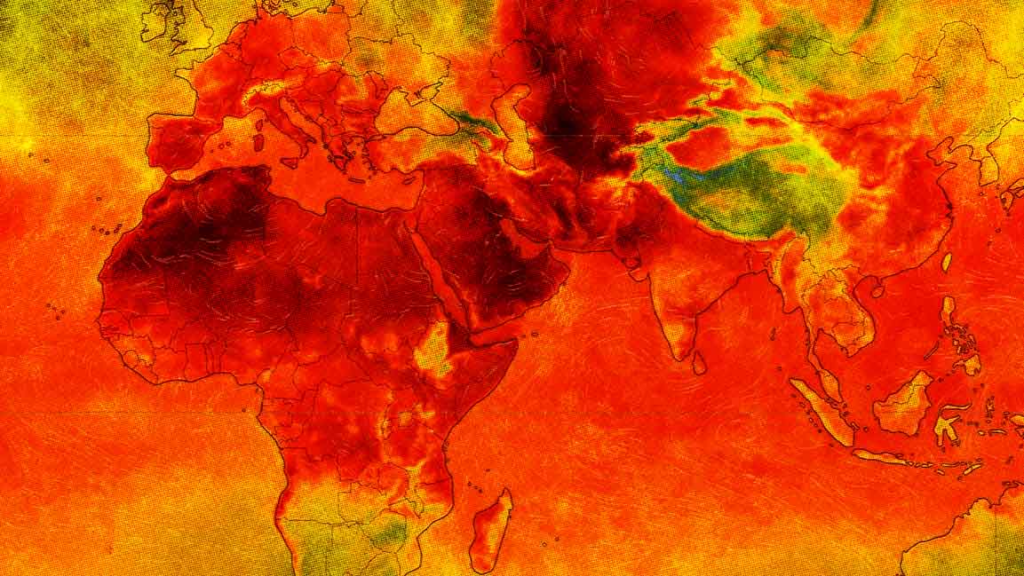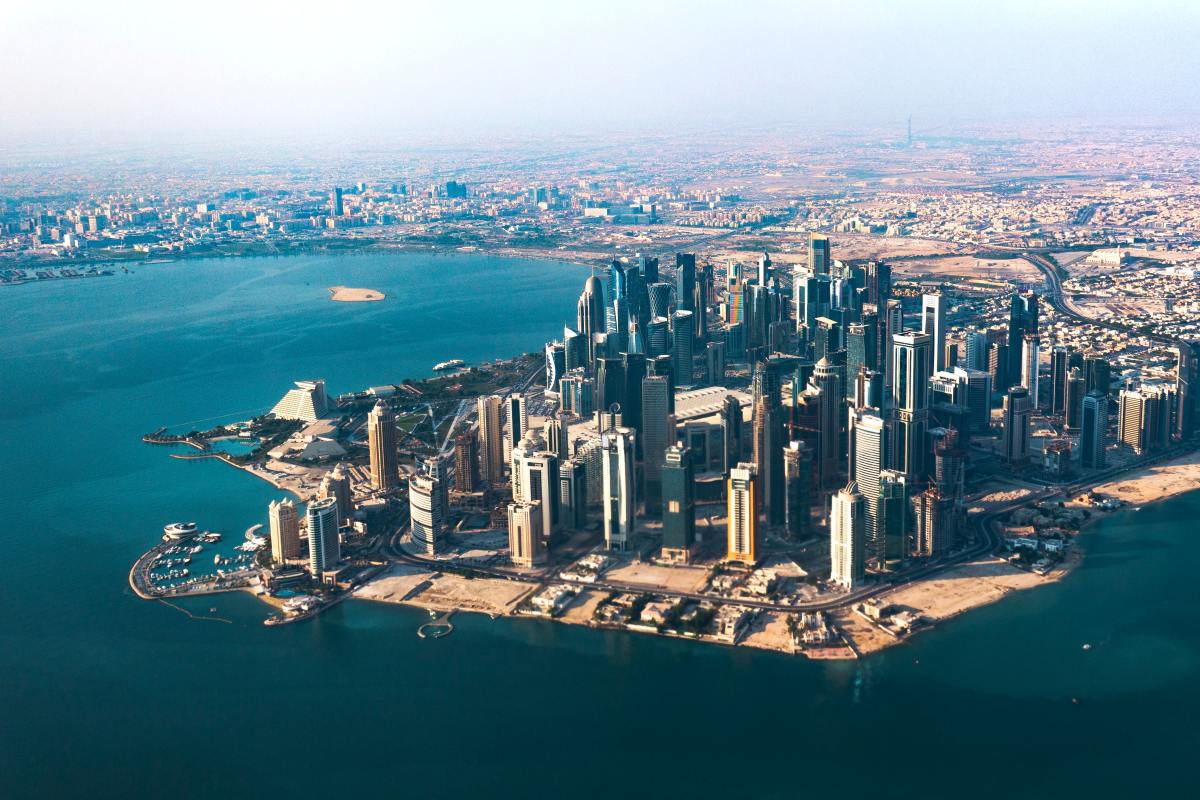Residents of Qatar are being advised to brace for a considerable rise in temperatures starting this week, as the country transitions from the relatively mild March climate to the significantly warmer months ahead. According to the Qatar Meteorology Department (QMD), daytime temperatures are expected to surge, ranging between 22°C and 37°C, with the potential for even higher peaks during midday hours.
This change signals the beginning of Qatar’s hotter season, which typically spans from April to October. The country, known for its arid desert climate, frequently experiences rising temperatures at this time of year. However, meteorologists indicate that this year’s shift could be more pronounced, with April’s highs surpassing historical averages.
What to Expect: Rising Heat Levels
April in Qatar marks the transition from the moderate winter months to the scorching summer season. On average, April temperatures hover around 32°C during the day, but the upcoming heatwave could push readings closer to 37°C or higher. Nighttime temperatures, which usually offer some relief, are also expected to rise, making for warmer evenings than usual.

The sun is expected to shine for around 9 to 10 hours per day, intensifying the overall heat index. Humidity levels, while not as extreme as in the peak summer months, will contribute to an increased perception of heat, making outdoor activities more challenging.
Why Is the Temperature Rising?
The upcoming rise in temperatures is primarily due to seasonal atmospheric changes. As the region moves deeper into spring, the sun’s angle becomes more direct, increasing solar radiation over the Arabian Peninsula. Additionally, shifts in wind patterns can bring hotter air from the interior desert regions, further elevating the heat.
Global climate trends have also contributed to erratic weather patterns, leading to more frequent and intense heatwaves. Qatar, like many Gulf nations, has experienced gradually increasing average temperatures in recent years, a trend attributed to climate change and urban heat island effects.
Impact on Daily Life and Work
With the mercury climbing, various aspects of daily life in Qatar are expected to be affected. Some of the key areas impacted by the heat include:
- Outdoor Work & Labor Regulations: Many industries, particularly those involving outdoor labor such as construction and infrastructure development, will need to take additional precautions. Employers may have to implement adjusted work hours or provide shaded rest areas to ensure the safety of workers.
- Increased Energy Consumption: The demand for electricity is likely to surge as residents and businesses increase their use of air conditioning. This could lead to higher energy bills and strain on the national power grid.
- Transportation Challenges: Those relying on public transport or commuting by foot will face harsher conditions, especially during midday hours when temperatures peak. Extra precautions, such as carrying water and wearing light clothing, will be necessary.
- Impact on Tourism and Outdoor Activities: The tourism sector, which sees many visitors exploring Qatar’s outdoor attractions, could see a shift in activity patterns. Tour operators may start scheduling excursions during cooler hours, and popular tourist spots might witness lower foot traffic during peak heat times.
Health & Safety Precautions
With the rising temperatures, residents and visitors are strongly advised to take appropriate measures to stay safe and avoid heat-related illnesses. Some key recommendations include:
- Stay Hydrated: Drink plenty of water throughout the day, even if you don’t feel thirsty. Dehydration can occur quickly in high temperatures, leading to fatigue, dizziness, and severe health complications.
- Avoid Direct Sun Exposure: Try to stay indoors or in shaded areas between 10 AM and 4 PM when the sun is at its strongest. If you must be outdoors, wearing a hat or using an umbrella can help reduce exposure.
- Dress Appropriately: Light-colored, loose-fitting clothing made of breathable fabrics such as cotton can help keep the body cool. Sunglasses and sunscreen are also essential to protect against harmful UV rays.
- Recognize Symptoms of Heat Exhaustion: Symptoms such as excessive sweating, weakness, nausea, headaches, and dizziness may indicate heat exhaustion. If you or someone else experiences these symptoms, immediate hydration and cooling down in an air-conditioned or shaded area is necessary.
- Monitor High-Risk Individuals: The elderly, young children, and individuals with pre-existing health conditions are more vulnerable to heat-related illnesses. Family members and caregivers should ensure they remain cool and well-hydrated.
Long-Term Outlook: What Lies Ahead?
As April progresses, temperatures will likely continue their upward trajectory, with May and June typically seeing even hotter conditions. By mid-year, Qatar’s climate reaches some of its highest temperatures, often exceeding 45°C in the peak summer months.
With climate patterns showing signs of increasing variability, experts urge continued monitoring and preparedness for more extreme weather events in the coming years. Authorities are also exploring new ways to mitigate the effects of rising temperatures, such as increasing green spaces, investing in cooling infrastructure, and implementing innovative technologies to regulate indoor and outdoor temperatures.
What Residents Can Do to Stay Comfortable
For those looking to stay comfortable despite the rising heat, a few simple lifestyle adjustments can make a significant difference:
- Adjust Daily Schedules: Consider running errands or exercising during the early morning or late evening hours when temperatures are cooler.
- Optimize Home Cooling: Use energy-efficient cooling methods such as closing blinds during the hottest parts of the day, using fans strategically, and ensuring air conditioning units are serviced regularly.
- Stay Informed: Follow updates from the Qatar Meteorology Department and local news sources for real-time weather alerts and safety recommendations.
Conclusion
With the heatwave set to take hold in Qatar, residents and visitors must take necessary precautions to stay safe and comfortable. The increase in temperatures is a seasonal shift, but with proper preparation and awareness, its impact can be minimized. Whether adjusting daily activities, staying hydrated, or monitoring at-risk individuals, everyone can take steps to navigate the upcoming heat safely.
For continuous updates on Qatar’s weather conditions, residents are encouraged to check official meteorology reports and heed any advisories issued by local authorities. As temperatures continue to rise, preparation and awareness will be key to staying safe in the weeks and months ahead.



